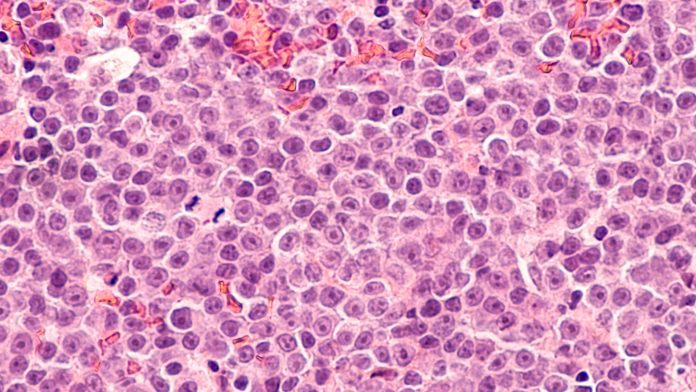
New insights on the workings of aggressive lymphomas could lead to earlier cancer detection and improvements in treatment, researchers say.
In a study led by the University of Southampton, investigators discovered a key feature of aggressive B-cell lymphomas that is not seen in normal B cells. This new understanding, researchers say, could help to inform further work towards earlier cancer detection and more targeted treatments.
The study has been published in Blood, the Journal of the American Society of Haematology.
Lymphoma is a type of blood cancer that affects white blood cells called lymphocytes, which are an important part of your immune system. According to Blood Cancer UK, over 14,000 people are diagnosed with lymphoma each year in the UK, making it the fifth most common cancer and the most common blood cancer.
Changes in B cells
The research team, led by Professor Francesco Forconi, observed a tumour-specific change in B cells. These cells are part of the body’s immune system and are responsible for producing antibodies. B cells have an antibody-like molecule on their surface, referred to as the B-cell receptor. In the study, researchers demonstrated how the receptors could differ in aggressive lymphomas by the presence of unusual sugars, known as glycans, in the antigen-binding sites of the lymphoma B-cell receptor.
From the findings, the researchers, including glycobiologist Professor Max Crispin and cancer immunologist Professor Freda Stevenson, determined that these glycans have a specific structure that allows the lymphoma cells to receive signals from molecules called ‘lectins’, which are attached to surrounding cells, enabling the tumour to survive and grow in the lymph nodes.
Earlier detection and therapeutic targeting
Francesco Forconi, Professor of Haematology at the University of Southampton, said: “This very exciting teamwork describes the structure of the glycans covering the surface of the tumour’s B-cell receptor and how it works. It is a remarkable tumour-specific feature required by all the tumour cells of patients with the most common lymphomas.
“This is a new specificity required by the lymphoma cells to survive, which we now know how to detect and are learning how it functions. Our findings are paving the way to further investigations, including early cancer detection and therapeutic targeting, both of which will be our future goals.”
The genetic characteristics of these lymphomas have been described with lymphoma expert Louis Staudt, based at the National Institute of Health, Bethesda, USA. The team also included Professor Thomas Bowden, from the Division of Structural Biology at the University of Oxford, who determined the three-dimensional structure of a fragment of the receptor containing the unusual glycans.
The study was funded by the charity Blood Cancer UK and the Keanu Eyles Fellowship.
Researchers now plan to precisely target the interactions between these glycans and the lectins by therapeutic antibodies that are being developed by Forconi’s team, in collaboration with the Antibody Vaccine Group (Professor Mark Cragg) at Southampton and Professor Carl Figdor at Radboud University in the Netherlands in a Cancer Research UK-funded project grant.






















